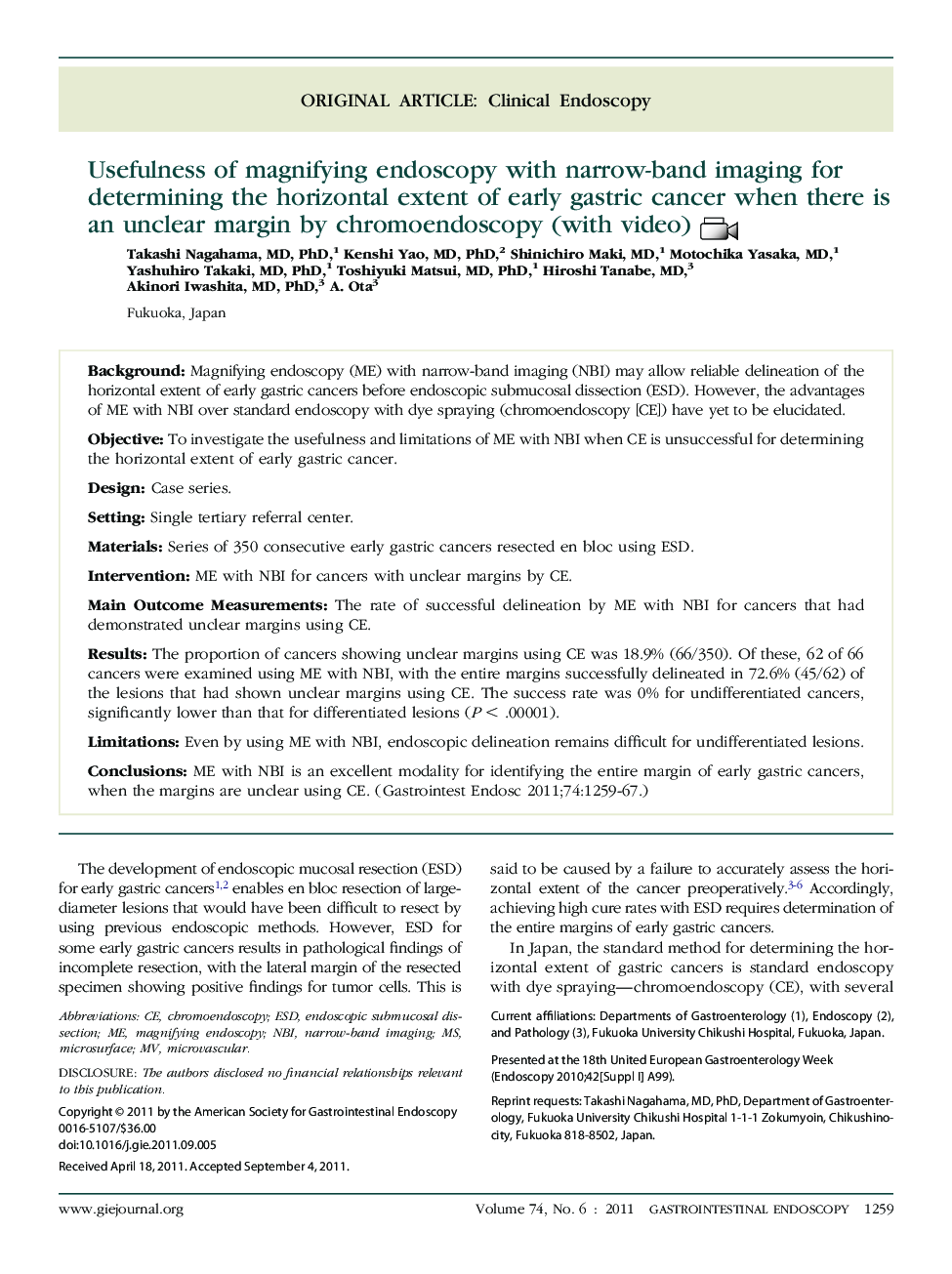| Article ID | Journal | Published Year | Pages | File Type |
|---|---|---|---|---|
| 3305053 | Gastrointestinal Endoscopy | 2011 | 9 Pages |
BackgroundMagnifying endoscopy (ME) with narrow-band imaging (NBI) may allow reliable delineation of the horizontal extent of early gastric cancers before endoscopic submucosal dissection (ESD). However, the advantages of ME with NBI over standard endoscopy with dye spraying (chromoendoscopy [CE]) have yet to be elucidated.ObjectiveTo investigate the usefulness and limitations of ME with NBI when CE is unsuccessful for determining the horizontal extent of early gastric cancer.DesignCase series.SettingSingle tertiary referral center.MaterialsSeries of 350 consecutive early gastric cancers resected en bloc using ESD.InterventionME with NBI for cancers with unclear margins by CE.Main Outcome MeasurementsThe rate of successful delineation by ME with NBI for cancers that had demonstrated unclear margins using CE.ResultsThe proportion of cancers showing unclear margins using CE was 18.9% (66/350). Of these, 62 of 66 cancers were examined using ME with NBI, with the entire margins successfully delineated in 72.6% (45/62) of the lesions that had shown unclear margins using CE. The success rate was 0% for undifferentiated cancers, significantly lower than that for differentiated lesions (P < .00001).LimitationsEven by using ME with NBI, endoscopic delineation remains difficult for undifferentiated lesions.ConclusionsME with NBI is an excellent modality for identifying the entire margin of early gastric cancers, when the margins are unclear using CE.
